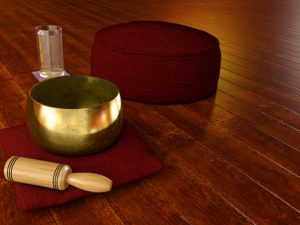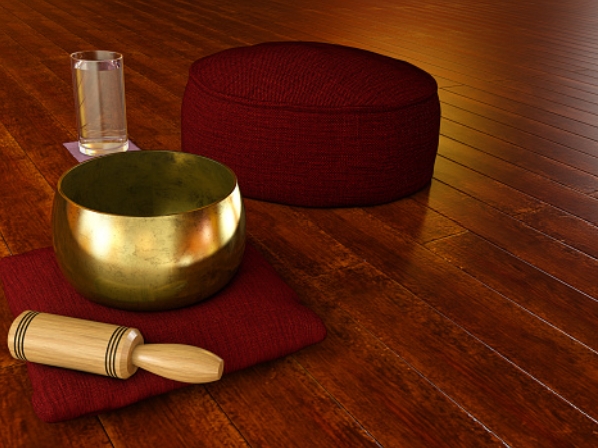If you’ve ever tried to sit cross-legged on the bare floor for your meditation practice, you know how hard it can be to focus on quieting your thoughts when your back hurts and your legs have fallen asleep. The right meditation cushion will offer your hips, knees, and spine the firm base of support they need to allow you to sit comfortably in cross-legged and kneeling meditation positions.
Meditation cushions come in a range of sizes and shapes, from small, round zafus to large, square zabutons and even including crescent-shaped pillows and lengthy bolsters. Which cushion is best for you? It depends on your height, flexibility level, and whether you prefer a firm or soft cushion. Here’s what you need in a meditation cushion.
Support for Your Body
The purpose of a meditation pillow is to provide the body with the support it needs for optimum alignment during meditation. When the body is in proper alignment, the spine is straight with the lower back curving in, the middle back curving out, and the neck curving back in, in an “S” shape. This posture puts the least stress on your joints and spine, so you can sit comfortably for long periods without your legs falling asleep or your back cramping up.
You need to buy a meditation pillow that can give your body the support it needs, and to do that, you should first assess your flexibility. Sit cross-legged on the bare floor. If your knees touch the floor or come within a few inches of touching the floor, you have good flexibility, and need a lower-profile meditation cushion. If, however, your knees want to stay high in the air, you’re not that flexible and need a higher meditation cushion.
Your body’s support needs can change over time, especially because your body will get more used to seated meditation poses as you practice them over time. It’s not a bad idea to choose a cushion style that allows you to add and remove filling to adjust the cushion’s height and firmness to your needs.

Support for Your Preferred Seated Pose(s)
Filling, shape, and size all play a role in how a meditation cushion provides support for a practice. There are two main fillings used in meditation pillows — kapok and buckwheat hulls. Kapok is a cottony, silky, fluffy fiber obtained from trees native to tropical regions in Asia. It creates a softer, more pillowy cushion, while buckwheat hulls create a heavier, but more firmly supportive, cushion.
The shape of your meditation cushion will affect the type of support it gives. For example, a crescent-shaped zafu will have a lower profile and will be more supportive if you’re comfortable in lotus pose, offering the gentle forward tilt your pelvis needs to support proper spinal alignment. If you’re less flexible, but still comfortable in seated poses, a round cushion could provide the height you need to give your knees and hips some extra space.
Perhaps you’re most comfortable in the Japanese seiza pose, with your knees forward and your feet under your hips. A round zafu, turned on its side, could provide support for your hips if you place it between your ankles in seiza. You could also grab a round or square yoga bolster, or even a square zafu turned on its size, to support your physical alignment in seiza. No matter what type of cushion or cushions you choose, place them on a large, square zabuton to provide some cushioning for your knees and ankles against the floor.
Durability
You want to choose a meditation cushion that will last, because going to the same cushion every day will begin to signal to your mind and body that it’s time to enter the quiet space of meditation. Quieting your thoughts will come easier if you have the physical queue of the cushion itself.
Both buckwheat hulls and kapok filling are resistant to breaking down, so they can continue to offer support that conforms to your body for years. Choose a pillow with a sturdy, removable canvas cover. Make sure you can add or remove filling to adjust the firmness and height of the pillow, as your body’s needs change over time. If weight is an issue, choose a lighter kapok-filled cushion, but if you want a heavier, firmer, but more supportive pillow, choose a buckwheat-filled cushion.
If you want to have a truly successful and beneficial meditation practice, you need the right tools. A supportive meditation cushion is the bare minimum of what you need, but even if you’re just a beginner, the right support can help you get the most out of every session.








